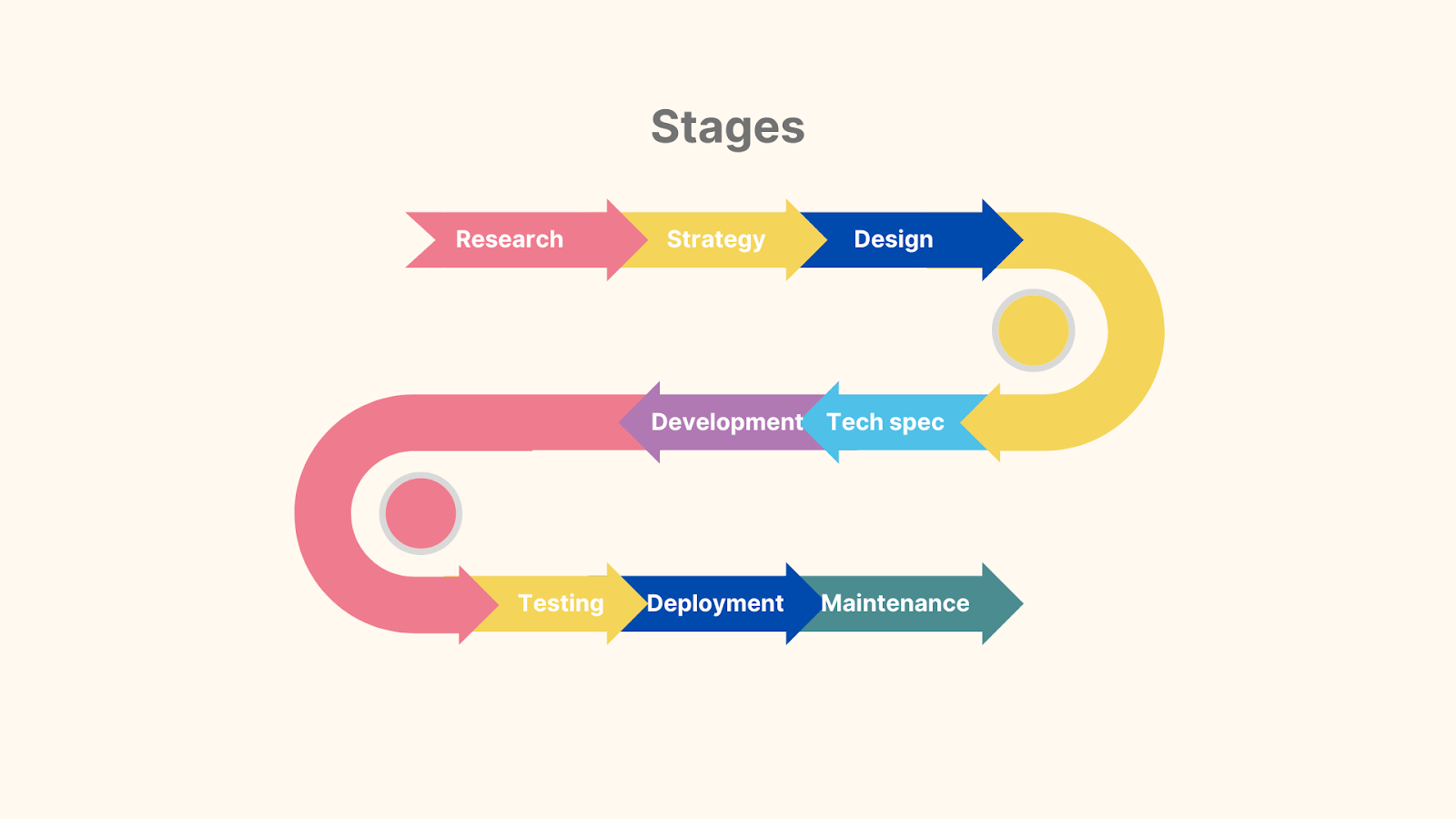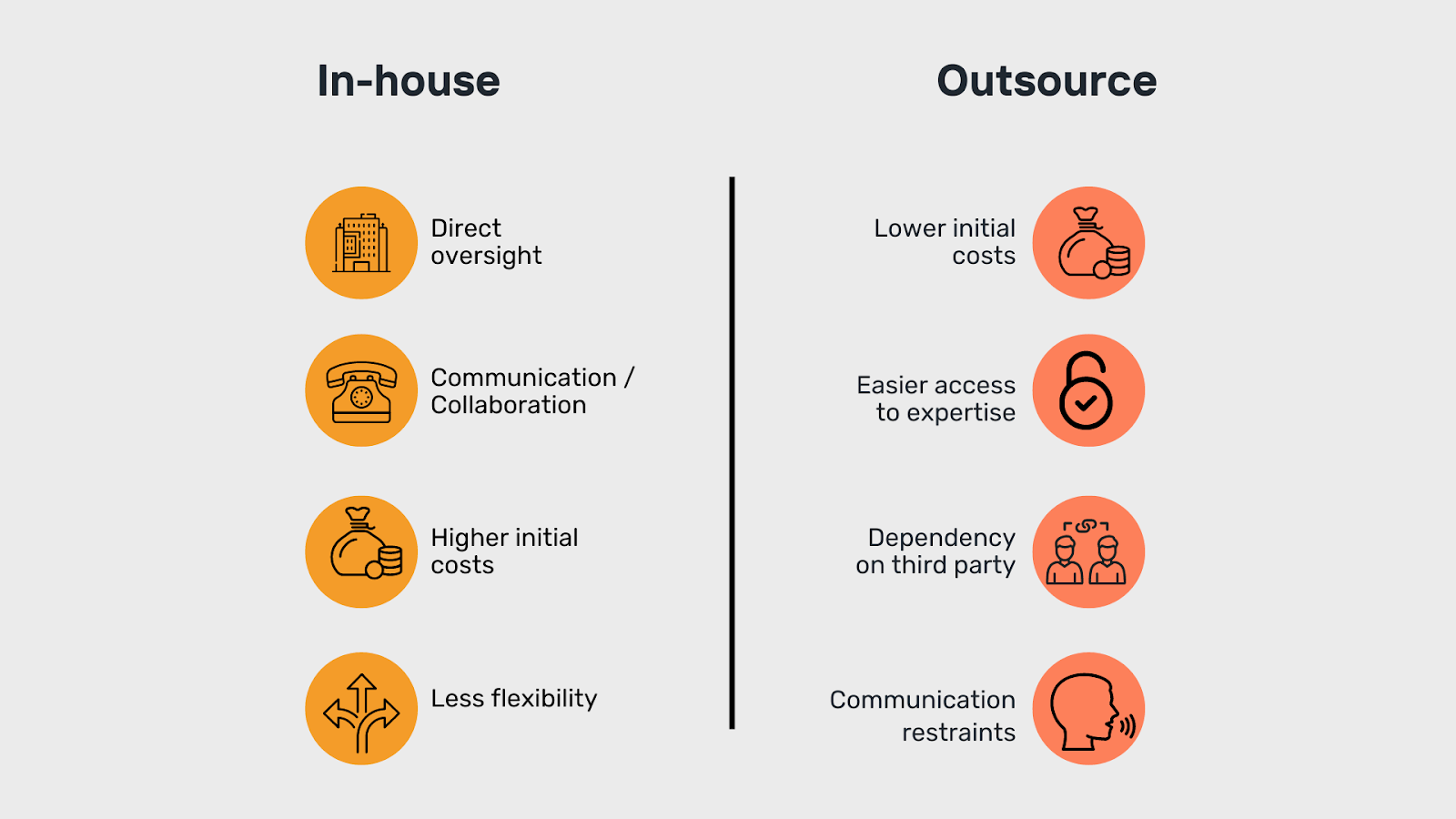In 2023, the weighted average of time users spent on their mobile devices exceeded 5 hours a day. There were 257 billion new app downloads and an app store spend of $171 billion (Data.ai). Considering these statistics, it is difficult to ignore the significance of mobile app development and the opportunities it can provide for startups and scaleups.
Increased global reach and the capacity to provide a greater depth of services mean that when comparing two businesses, the one offering a mobile app will gain a competitive advantage over the one without. The impact will differ depending on the product type and target audience, but overall, the wider market footprint can generate a greater revenue potential. This is further enhanced by the opportunity to broaden revenue strategies through in-app purchases and subscriptions, increase engagement through features such as notifications, and the potential for additional monetization from advertising.
On an internal level, a mobile application enables a business to learn more about user behaviors; tracking user interactions can be leveraged for research into product improvements. Lastly, when a customer-facing application is not suitable for a startup or scaleup, it can still assist with product tracking, such as sales or stock, internal communications and processes, and customer support. With the clear benefits visible, where does a business start if it wants to create a mobile app?
The process of creating a mobile application

- Research: The goal of this stage is to research and validate the idea and to define the USP for the product. Understanding your target market, the application feature requirements, and gaining an understanding of competitors and failures within the arena will be components of this stage. Upon completion, you should be clear about why you are building the mobile application, who you are building it for, and what problem you are attempting to solve.
- Strategy and planning: Combining the data acquired in the research stage with your product vision, you can create KPIs, milestones, roadmaps, and deliverables. Use this time to consider revenue strategies, and budgets and to estimate the costs required for developing, maintaining the mobile application and also for marketing it.
- Design: By utilizing wireframes, mockups, and prototypes the features and functionality for the mobile application can be visualized. Overall, creating the user experience, journey, and the design of the application.
- Technical specification: Decide whether you want to create a mobile application for iOS, Android, or both, and choose the tech stack you wish to use. If you don’t want a native application consider cross-platform solutions such as React Native or Flutter. Consider the UI/UX, functionality, security, and scaling requirements for the app. Evaluate these to choose between a native, hybrid, or cross-platform application. Plan both the front-end and back-end architecture and consider what APIs are required.
- Development: This is the development of the application. An MVP is a great choice to start building the application, allowing you to create the skeleton and core functionality of the application and then iterate and grow upon it once you have gathered user feedback.
- Testing: Performing internal testing ensures the quality of the application, checking features that fulfill the required functionality and testing for bugs. Combined with automated testing, the ongoing quality of the application can be safeguarded. Additionally, when you are ready, beta testing will enable you to release the application to a specific group of users for additional testing and feedback.
- Deployment and release: The application should be deployed to the relevant app stores and released to the iOS app store and the Google Play store.
- Maintenance: Performing ongoing application maintenance, using data from user feedback to enhance the product. Logging to ensure stability and offering customer support will work towards you growing and scaling the mobile application and increasing your digital presence.
Choosing the right team for mobile development
“Great things in business are never done by one person. They’re done by a team of people.” - Steve Jobs
With a clear understanding of your strategy and the mobile application requirements, you need to consider how to build a team. Understanding the core roles of each member of the team, alongside executing and building the team effectively, will have a great impact on its overall success.
Mobile development roles and objectives
Typically, a mobile app development team will encompass most or all of the following roles:
- Business analyst: A business analyst will work closely with the stakeholders, technical team, and users. Striving to ensure the mobile application aligns with both the users' needs and the business objectives. They will undertake market research, follow industry trends, and continually review product competition and failures. Estimation responsibilities will also feature in their work, setting the user's needs and the business objectives. They also feature as part of their work-set as they assist with budgets and timelines.
- Product owner: Usually an in-house member of the team, this strategy-based position is a core stakeholder representative working between the development team and the remainder of the company. They will work on the project from its inception to completion, ensuring user requirements are aligned with the business objectives. Acting as the customer spokesperson, the role will include budget management, product vision, and feature alignment, alongside work on the roadmap.
- Project manager: With the overall responsibility of managing the execution of the project, the project manager works to ensure that it is completed on time, of high quality, and within budget. Through planning, coordinating tasks, resources, and budget, they are the timekeeper for the project. The role has a large focus on communication ensuring the development team operates efficiently. They also work to catch issues early on, communicating them to both stakeholders and relevant customers and clients.
- UI/UX designer: Mobile apps depend on a seamless user experience, which ensures high user satisfaction and encourages repeat engagement. The role of the UI/UX designer is to facilitate achieving this through research and testing, mockups and wireframes and incorporating the business's brand, values, and marketing goals.
- Developers: In charge of writing the code for the application, the developers will transform, through code, the UI/UX into a real-life mobile application. Depending on the type or scale of the application, you may need front and back-end developers, and if you are creating a native application, you will need to consider developers for both iOS and Android.
- QA: It is impossible to deliver a high-quality product without thorough testing and quality control practices. Combining bug testing with accessibility, security, performance, and device compatibility testing, the QA engineer is responsible for the quality levels of the end product.
In-house vs outsourced: selecting the right team for mobile development

If you don’t already have the skills required to create the appropriate mobile, you have a few options available: creating an in-house team, outsourcing all or part of the process to an external company, or employing freelancers. The decision is likely a unique one, entailing consideration of the business's strategic goal for building the application; there are a few options available: creating an in-house team, outsourcing all or part of the process to an external company, or employing the use of freelancers. The decision is likely a unique one, entailing consideration of the strategic goals of the business, the time to market, and the budget available.
Advantages of in-house teams for mobile development
An in-house team means the team is built with only employees who work full-time for your company. With an in-house team, you have direct control over hiring and ensuring the employee is the right cultural fit for your startup or scaleup. They are deeply integrated into the product, the company vision, and values, which can significantly enhance communication and collaboration. Creating an in-house team means that the startup or scaleup will retain most of the knowledge and expertise gained during the build process, which of course, is highly valuable. The tradeoff for using this approach is that it will take an investment upfront of both time and money. A recruiting process will need to be undertaken, and depending on the skills required, this can take some time. New employees will need to be efficiently onboarded, and infrastructure and processes will need to be put in place to support all of this. Not every company may wish to do this or be ready to do so.
Advantages of outsourcing mobile development
Alternatively, you can outsource the project completely or partially. With various pricing models available, this approach can mean lower upfront costs and greater flexibility, especially as you look to scale up or scale down during the process. Leadership resources can be acquired either through CTO as a Service options or as a Fractional/Part-time CTO.
For development, many companies struggle to find the right developers, and outsourcing may give you easier access to specialized skills and expertise. Another consideration here is using some amount of in-house resources and boosting them partially with outsourced ones. With the shorter initial time investment to start the build process, you will benefit from a faster time to market. The tradeoff for outsourcing is reduced control over the development process. The knowledge acquired during the process will not be entirely retained within the company, and as you depend on other providers, there may be communication issues that arise.
Conclusion
Embarking in the process of creating a mobile application for your business should be an exciting opportunity to embrace. Work to build a cohesive team, laying a robust foundation for the product's growth. Seek advice from specialists or those who have undertaken the journey before you to navigate the path successfully. If you are struggling to build your team, reach out. We have experience working with many different clients, MobieTrain and Sweepbright are just two examples. We are always ready to help.










Member discussion